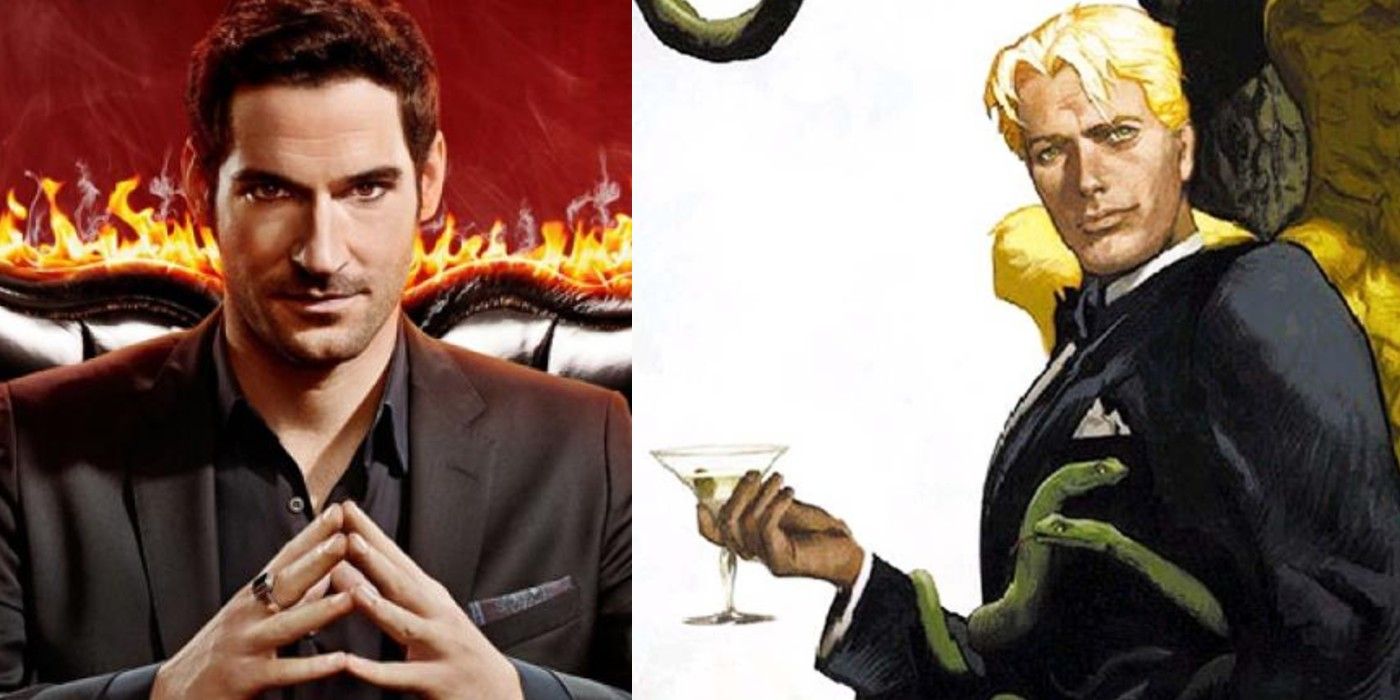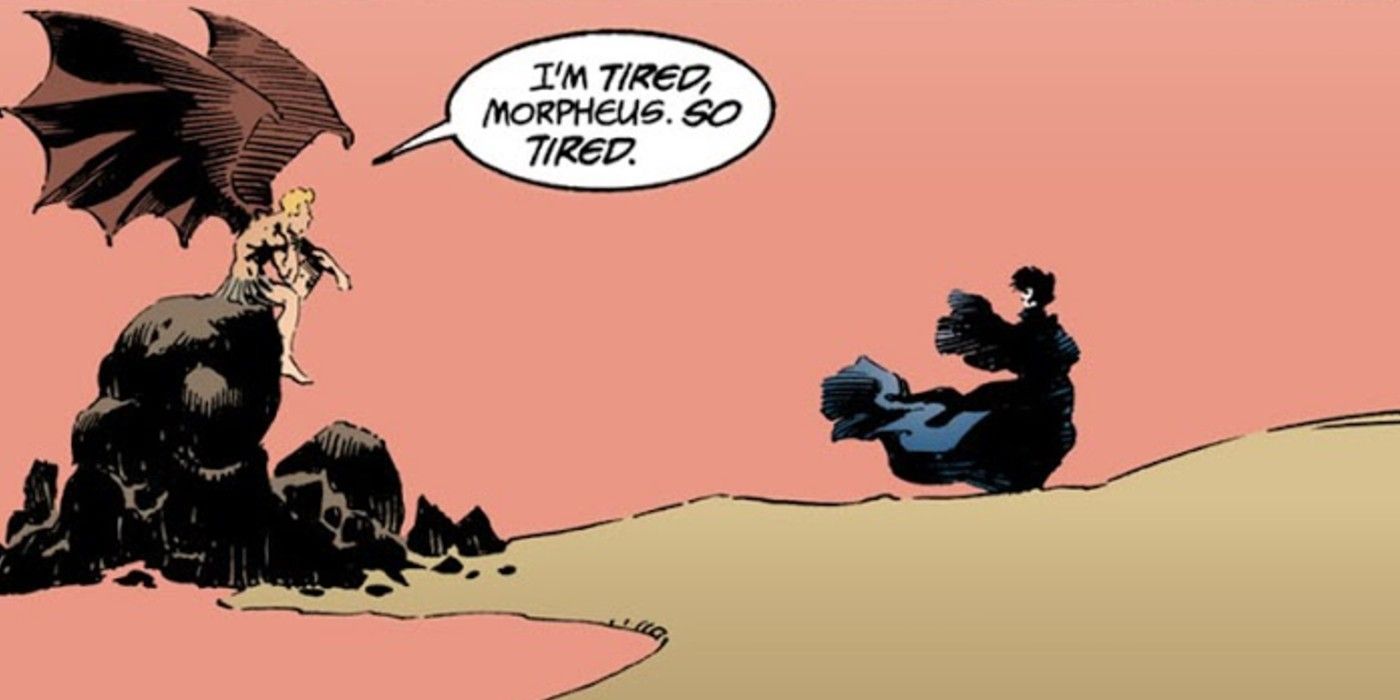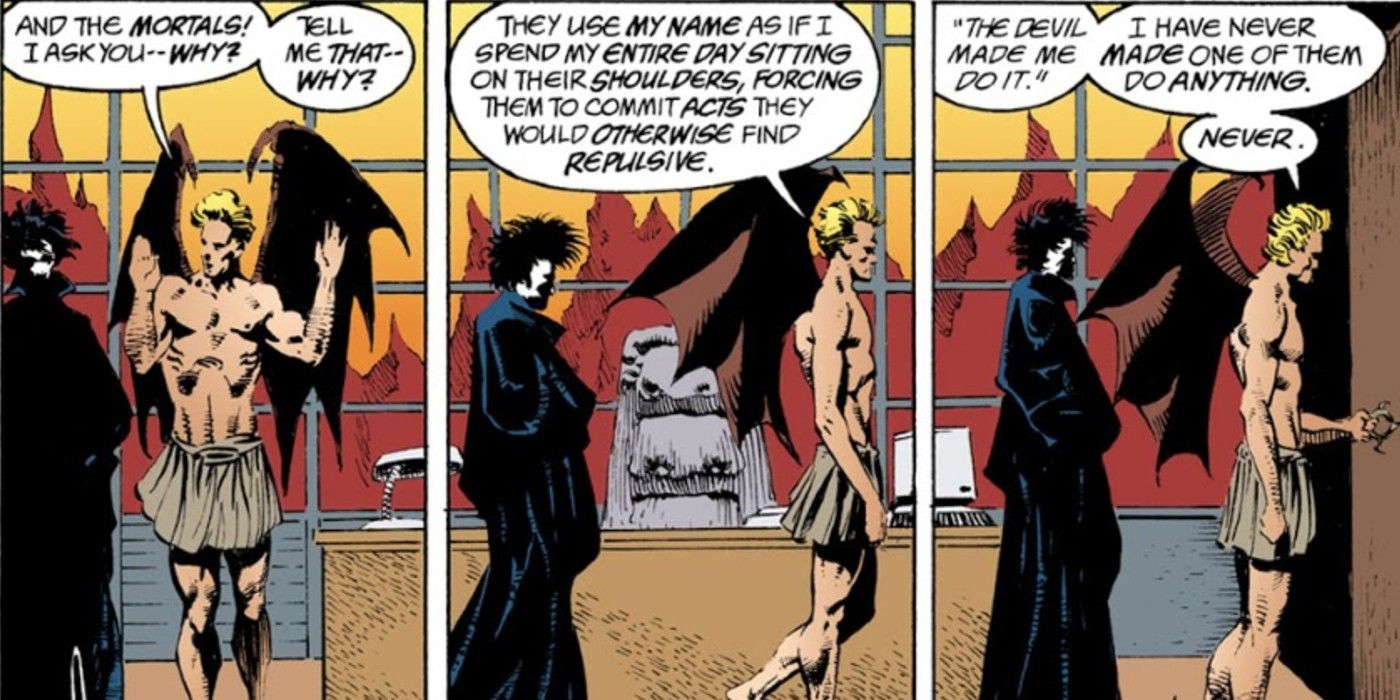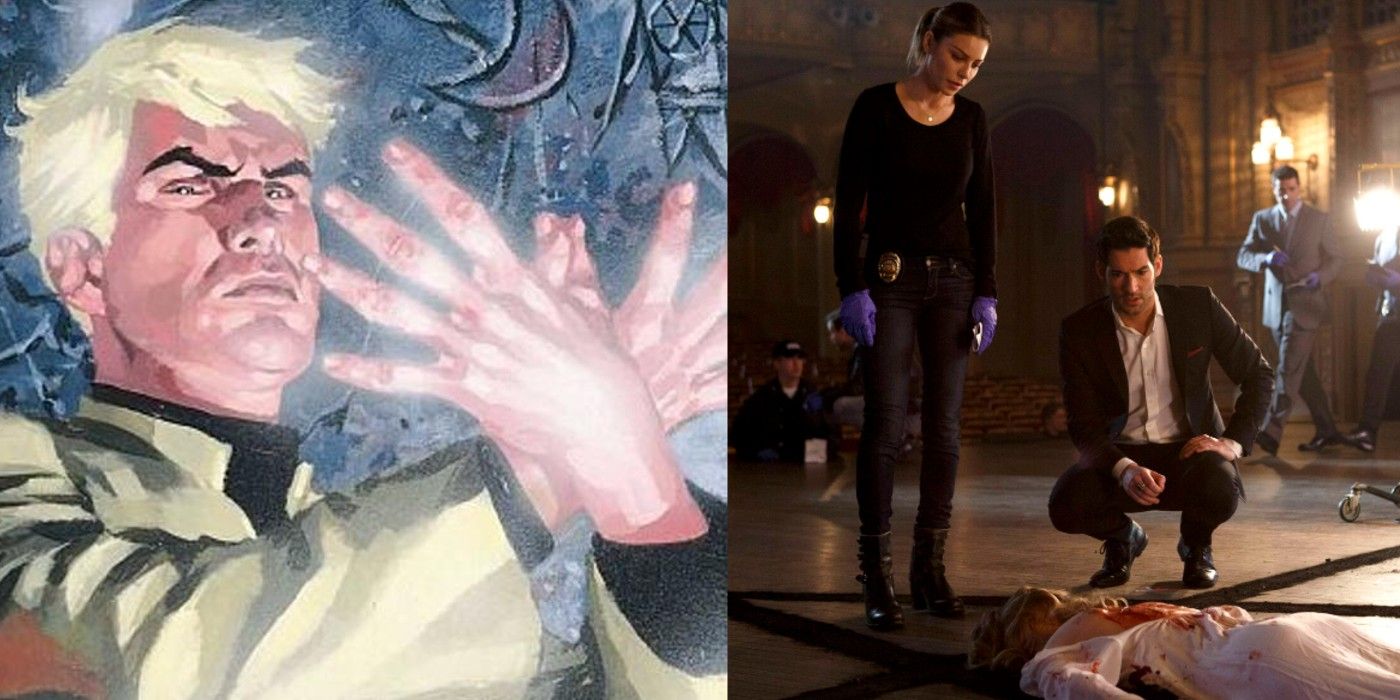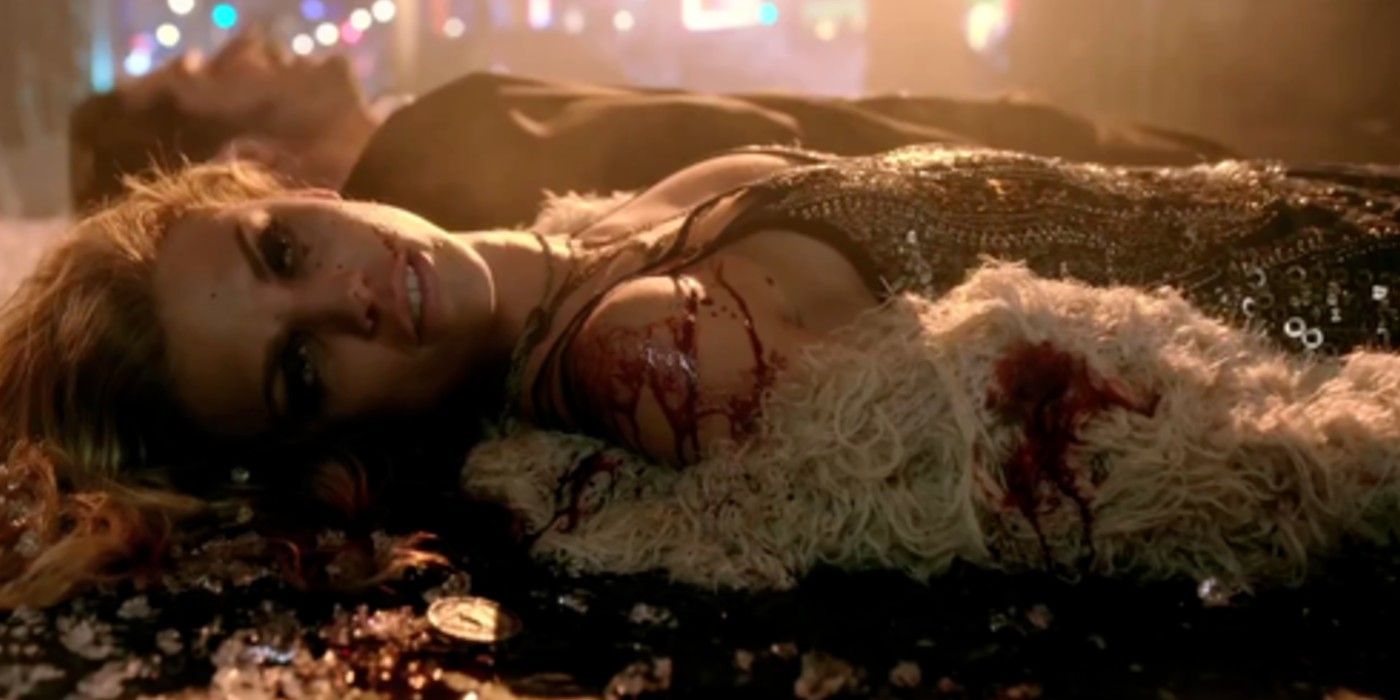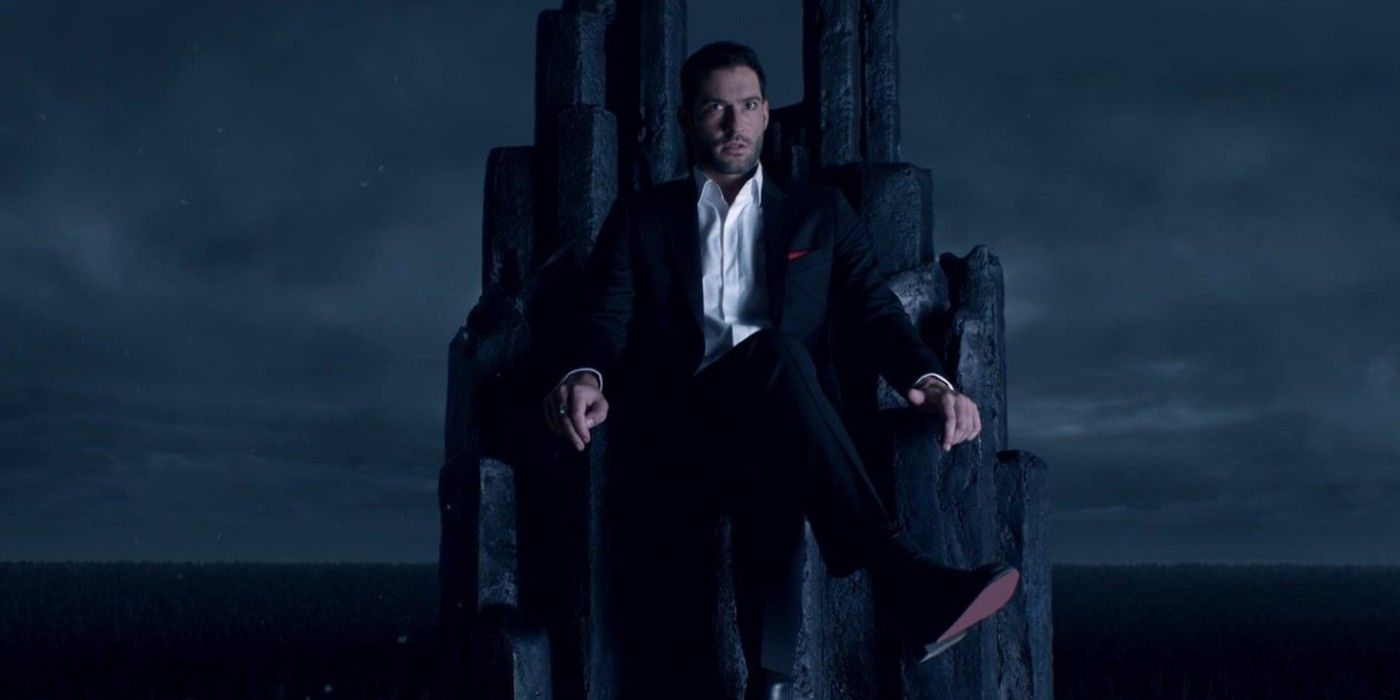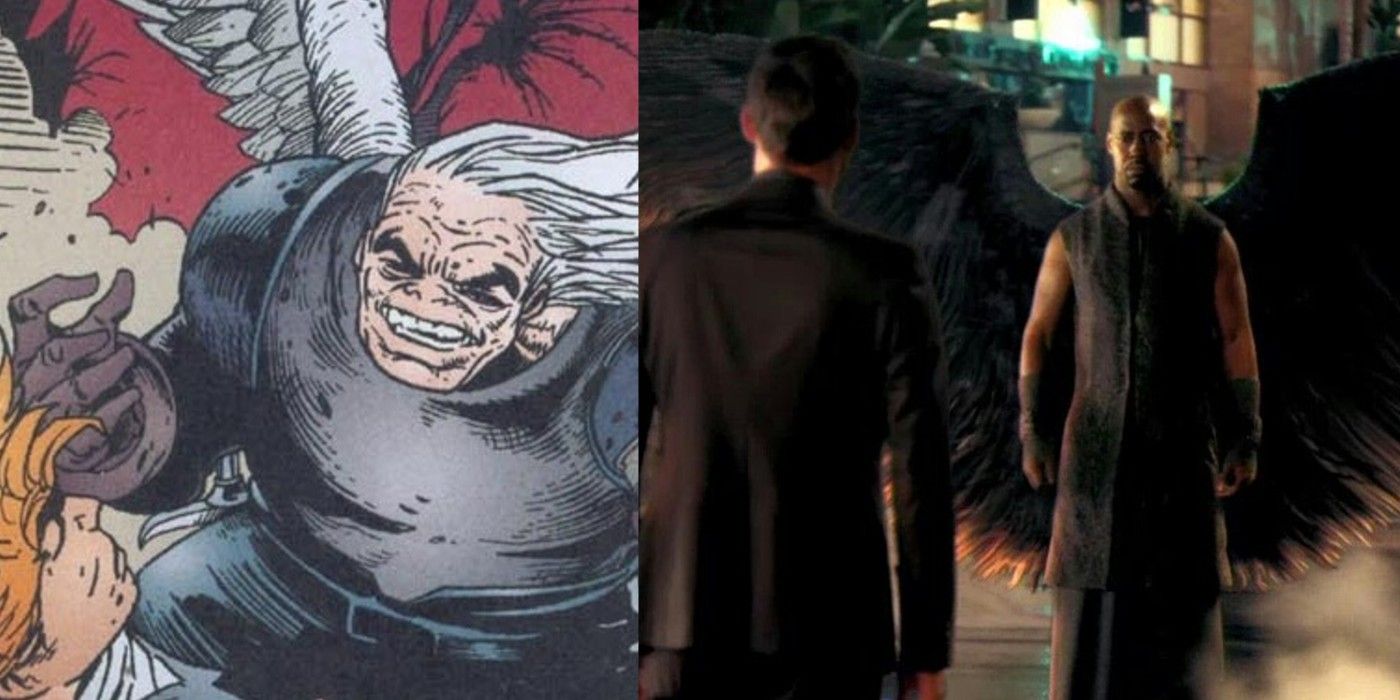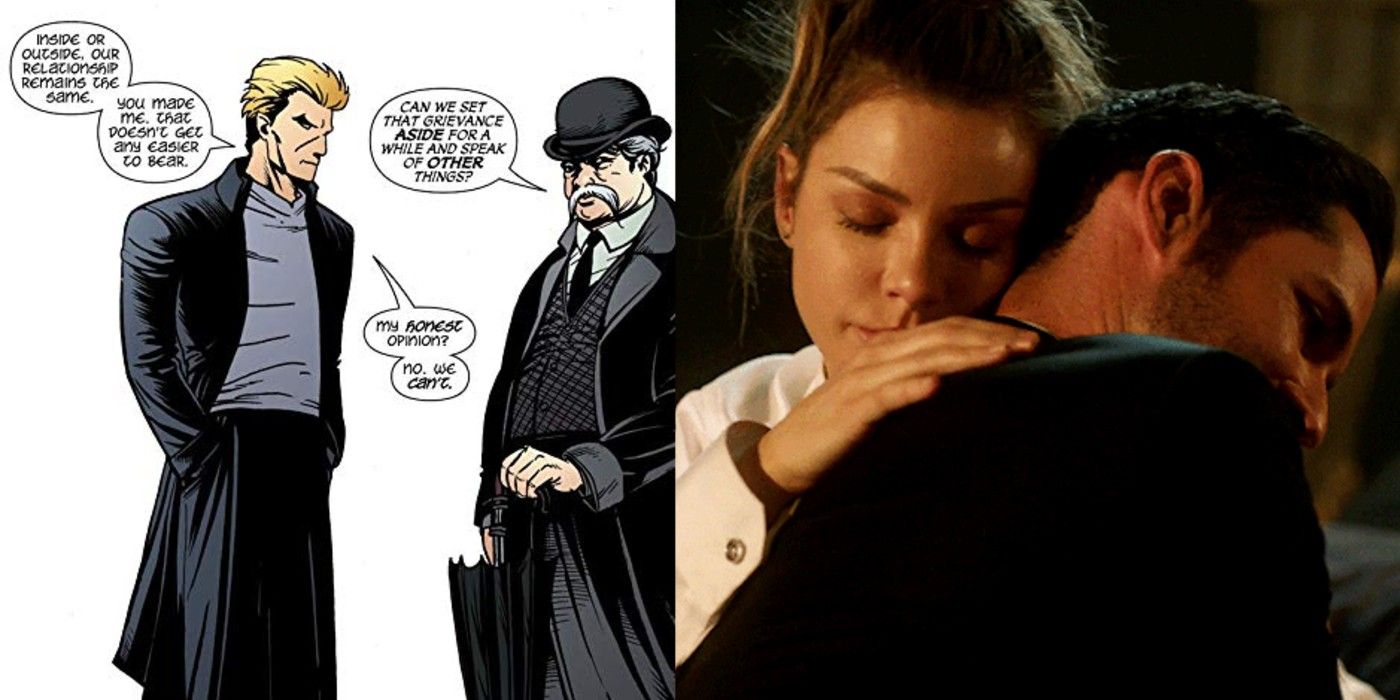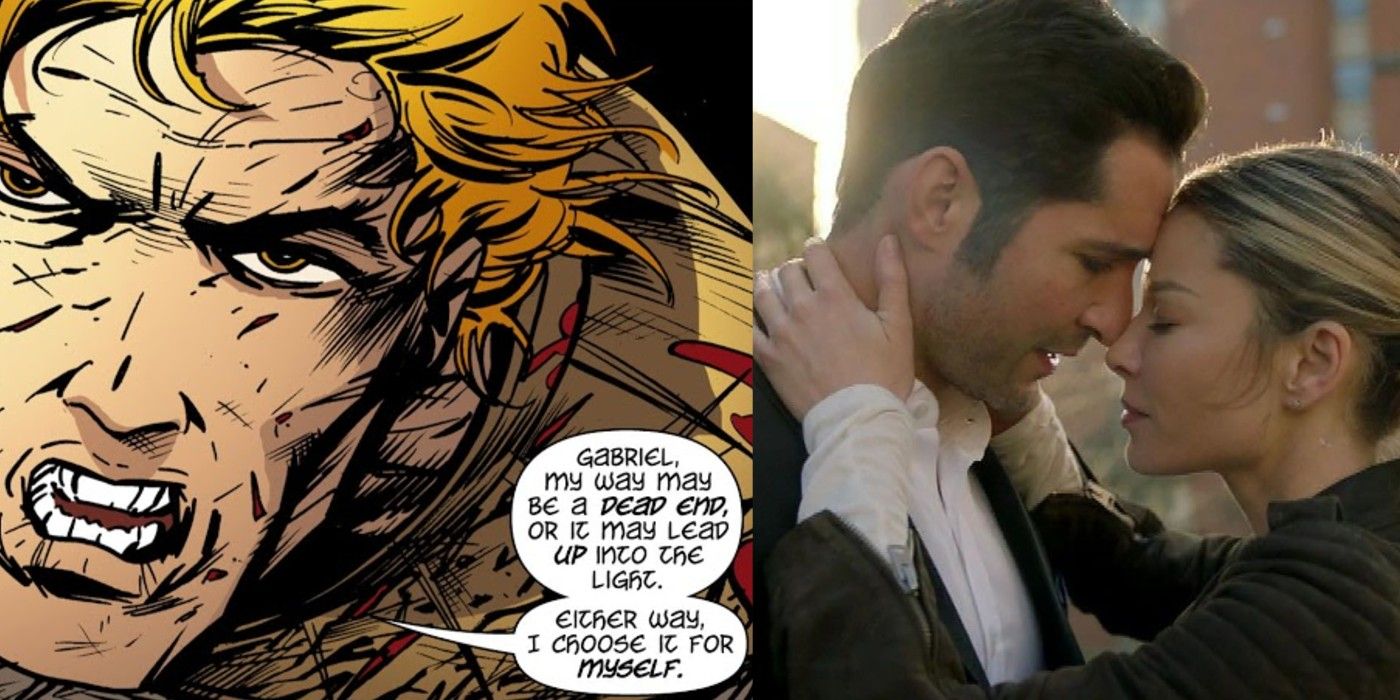Against all odds, Fox TV’s adaptation of Lucifer survived cancellation thanks to its dedicated fanbase. Loosely based on the comics of the same name that spawned out of Neil Gaiman’s magnum opus Sandman, the show follows a retired Lucifer Morningstar (Tom Ellis) as he runs a fancy nightclub on Earth where he meets all kinds of people and otherworldly beings.
Just like Arrow or Gotham, this adaptation of a well-known DC title only borrows the basics of its source material before telling its own story. It goes without saying that a lot was changed during the comics’ translation to the small screen, many of which fans of the Vertigo comics written by Mike Carey would quickly notice. Here are two things that Lucifer kept the same from the comics, as well as eight things that were changed.
Same: Abandoning Hell
Both the comics and the series start with Lucifer growing disillusioned about dominion over Hell, which convinces him to leave his duties and retire in the mortal realm of Earth. As novel as this premise may sound, this forms the backbone of the entire story and grounds one of the most well-known Biblical figures.
The only notable difference here is that Lucifer comes to this decision by himself in the series, whereas he took Dream’s words to heart in Sandman before leaving hell for his own Vertigo series.
Same: The Lux
Equally as famous as Lucifer himself is his club: The Latex Lux. Located in uptown Los Angeles, the upscale club serves as Lucifer’s home on Earth and base of operations, where he goes to recuperate or wile the nights away playing the piano.
A slight difference here is that Lucifer doesn’t spend much time in the Lux in the comics because he’s usually on an off-world adventure. On the other hand, the series pays lots of attention to the Lux and its day-to-day operations because of the series’ more grounded and less heightened approach to Lucifer’s story.
Different: The DC Connection
Because of the fact that Lucifer was published by Vertigo Comics, which is DC Comics’ imprint for mature stories, encounters with DC characters were bound to happen. Some of his notable crossovers include meeting John Constantine in The New 52 reboot and his famously eye-opening conversations with Dream in Sandman.
Since Fox TV doesn’t have the rights to many of DC’s characters, Lucifer’s world has been considerably shrunken for his televised run. For legal reasons, the show makes no mentions of the many superheroes and other residents of the DC universe that Lucifer met in the past.
Different: The Story’s Structure
In his comics, Lucifer embarked on a sprawling cosmic quest to save all of Creation. This led to various adventures where he interacted with different beings from a multitude of worlds and dimensions. Lucifer carried on the high fantasies of Sandman but gave them a dark spin. Appropriate, given who he is.
The televised adaptation turns Lucifer’s story in a procedural crime series with an urban fantasy twist, kind of like Supernatural. This may have been done for budgetary reasons and possibly to give audiences a more familiar set-up for a show starring The Devil himself.
Different: The Catalyst
Both versions of Lucifer start with him being spurned out of retirement, but what pushes him differs. The series has Lucifer feeling sympathy for the first time in ages after a human friend is murdered outside his club, leading him to work with the steadfast LAPD detective Chloe to solve the crime and learn about her world.
Meanwhile, in the comics, Lucifer receives a mission from God. Should he accept it, the fallen angel could name any price he wants. Though suspicious of the diety's real motives, Lucifer takes it up to kill time and seize the ultimate opportunity.
Different: The State Of Hell
After spending eons on his throne, Lucifer grows weary of overseeing Hell and leaves it for Earth. This turns out to be a big mistake, since Hell quickly fell apart without his leadership, forcing even God himself to beg the former Lord of the Damned to return.
Conversely, Hell was fine after Lucifer’s departure in the comics. This was because, unlike the series, God had a contingency plan prepared in case of Lucifer’s retirement. In Lucifer’s place, a pair of angels who were originally sent to deliver a message were fooled by God into running Hell.
Different: Amenadiel
In both the comics and the series, Lucifer has to deal with heaven’s wrath that’s best represented by the angel Amenadiel. Driven by his loyalty to God and his hatred for Lucifer, Amenadiel attacks Lucifer whenever he can but his character arc is different in both incarnations.
Where he’s a single-minded nuisance in the comics, Amenadiel is a more fleshed-out character in the series. Amenadiel questions God’s authority and even allies himself with Lucifer in the series, while he dies a dumb brute in the comics after being constantly outsmarted by the former angel.
Difference: Mazikeen/Maze
Lucifer may be a loner, but that doesn’t mean he doesn’t have any friends. His most well-known ally is Makizeen, who also enjoys the distinction of being the only person Lucifer openly shows affection to. At least that’s how it is in the comics.
While her mangled face remains, Makizeen’s relationship with Lucifer is different in the show. Here, she’s painted as his best friend since Lucifer’s love interest is Chloe. She’s also not as loyal as she was, constantly planning coups against Lucifer—something her illustrated counterpart would never do. That and she can now talk properly.
Different: Lucifer’s Personality
While his name and backstory remain the same, Lucifer is a different person in the comics and series. Originally, Lucifer was an arrogant sociopath who meddled into human affairs out of morbid curiosity. He does value his few allies, but generally speaking, he couldn’t be bothered to care much for anyone other than himself.
The series presents a more human and emotional Lucifer who hides his true emotions behind a smugly sarcastic facade. This has made him more vulnerable but also more relatable to his father’s creations that he’s used to punishing in the afterlife.
Different: The Central Theme
What made the comics unique and well-revered was its philosophically-charged analysis of free will and destiny. Since his creation, Lucifer wanted to be truly free of his father’s control, but even his rebellion may have been divinely predestined, further embittering the already furious fallen angel.
The series has shades of this, but they’re considerably toned down, instead opting to concentrate on Lucifer’s connection with those around him and his discovery of what love and mortality mean. While an interesting arc for a demon to have, the series’ point is noticeably simpler than the source material’s.

